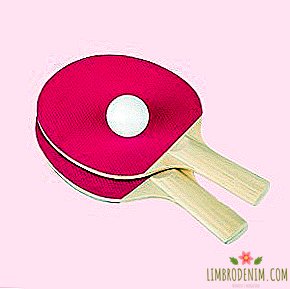Hairy armpits: Pros and Cons
Simultaneously with the new round the struggle for women's rights and against gender stereotypes is gaining momentum in the movement for freedom of expression through appearance. There is definitely a trend in the world to rehabilitate unshaven armpits, but there is still no consensus on this issue in society: the arguments about unhygienicity and lacking aesthetics still sound as counterarguments. We decided to sort out the background and weigh the pros and cons of hairy armpits.


Why do we need hair under the arms?
Unlike popular error, the process of evolution was not accompanied by the disappearance, but by the reduction of most of the hairline. Therefore, there is still much more hair on the human body than it seems — just many of them are almost invisible. Fluff hair grows all over the body and is even on the cheeks and the tip of the nose, although only your beautician or photographer can pay attention to them during macro photography. Much more obvious is the pubic and axillary vegetation, which persistently continues to make its way during puberty, despite our centuries-old struggle with it. Actually, the appearance of these secondary sexual characteristics is intended to signal maturation and attract partners, accumulating and distributing attractive pheromones.
In addition, according to nature, hair in the genital and armpit areas has a protective function: in the second case, it must prevent friction of moist skin and create an additional surface for evaporation of sweat (simply, ventilation). However, modern humanity successfully copes with both tasks without hair: perception of sexuality today is much more complex, clean underwear, daily panty liners and water procedures provide protection even to the deepest bikini, and most modern antiperspirants do not just block sweating, but also work like baby powder. So why do we still need armpit hair if they don’t carry any specific functional load? Scientists have no exact answer.


When and why did people start shaving their armpits?
It is believed that the fashion for depilation was set by the ancient Egyptians: types of razors with blades made of silicon and bronze, made 5000 years ago, were found in Egypt and Mesopotamia. The Egyptians also invented shugaring - sugar paste, with which you can remove hair from anywhere and which is still used. Smooth, depilatory body was considered the norm and testified to the high social status of the ancient Greeks and Romans. Hindus got rid of hair on all parts of the body in order to more easily endure life in a hot climate, for reasons of hygiene and aesthetic ideas about beauty. In ancient Greece, women with hairy armpits and shins were looked like savages - the ideal was a clean-shaven and feminine body (just remember what ancient statues look like). At the same time, in the Middle East, armpit hair removal was also considered a religious ritual - evidence of not only physical but also spiritual cleanliness - which was respected by both men and women. As early as the 7th century, the Prophet Mohammed issued recommendations for depilating armpits. The Arabs, by the way, gave us one of the most aesthetic methods of depilation - with the help of thread, while the Greeks, Romans and Indians used not only humane wax and sugar paste, but literally washed the hair with pumice, scraped off sharp shells, removed hair with tweezers sea shells and experimented with depilatory mixtures on an alkaline basis.
In the east - in Japan and China - since ancient times hairiness was valued, and the fashion for "naturel", though it began to decline with the penetration of local culture of Western culture, but has maintained stable positions until now. Europeans also for a long time quietly got along with body hair: only in the Middle Ages did they begin to correct their eyebrows and remove the hair on their foreheads to make them appear larger. In the Renaissance, when smoothly shaven nymphs looked at contemporaries with canvases of great artists, depilation was still the exception to the rule among people, and the methods of hair removal themselves looked intimidating. For example, women used a mix of arsenic and quicklime, which worked in much the same way that Veet cream works today. The only caveat - the mixture had to be washed off very quickly, as soon as it began to bake the skin, otherwise flesh also went off with the hair. One way or another, until the beginning of the 20th century, depilation among Europeans and Americans did not serve aesthetic purposes, but was primarily a method of getting rid of pubic lice.
In the Western world, women unanimously took up the razors with the appearance of open clothes, and the first women's magazines turned them towards the perfectly smooth body. Thus, in 1915, Harper's Bazaar published the first advertising campaign, which called for contemporaries to remove hair under their arms, so that they could bravely flaunt in dresses with open shoulders, which they just could afford for the mass buyer. In the same year, Gillette released the first women's razor and finally doomed the next generation to regular hair removal. So, the appearance of a bikini in the mid-40s left nothing for women but to clean their hair all over their body, since by this time there were already razors and depilatory creams with a gentle composition, and soon they invented epilators. In a study published in 2014 in the American Journal of Obstetrics and Gynecology, 87% of women surveyed admitted that they partially or completely remove pubic hair. What to say about the armpits, shaving which today and does by default equals to brushing your teeth.



Hairless armpits - a matter of hygiene or beauty?
In any dispute about the fate of the armpits, depilation advocates most often carry an equal sign between the presence of hair and a bad smell, excessive sweating and some general untidyness. We'll have to disappoint them: the position "it is unhygienic!" breaks into two counter arguments. First, a shaved armpit without the use of deodorant can create more problems than unshaven. Hair forms a small, but effective layer and the armpit does not "stick together". Secondly, not hair emit sweat - they only accumulate and distribute it. Modern hygiene products affect the sweat glands, and the hair has nothing to do with it: if you have a good antiperspirant, in fact, there is no difference, if you have a naked armpit or there are several centimeters long curls on it.
Simply put, if you have a habit of looking after yourself, taking a shower at least once a day and using deodorant, most likely, no unsanitary conditions and repulsive smells do not threaten you. This confirms the experiment of Czech scientists, for which volunteers shaved one armpit for a couple of months and left the unshaven another. The result was tested on women who did not notice almost any difference. Many, however, the presence of hair under the arm interferes physically: they are not that prickly (this stage passes quickly), but they are simply felt. Here, the so-called interiorization of experience plays a role: taking a certain standard of comfort and beauty, we experience unpleasant feelings if we go beyond its borders. Roughly speaking, if we were brought up in a culture where it is not customary to shave the armpits, we would most likely not perceive the hair under the armpits as something physically annoying, since for us it would be natural and habitual.
It turns out that the “axillary dilemma” in the 21st century is not a matter of compliance with sanitary norms (times when an abundance of body hair guaranteed that they contain harmful bacteria and lice, in most civilized societies have sunk into oblivion) in our cultural tradition. Now, for the dissemination of stereotypes about beauty and health, reshored covers of modern gloss are responsible, and the aversion to armpits is so great that they sometimes disappear altogether from actresses and models. But do not think that only our contemporaries and contemporaries are faced with the discrepancy between the generally accepted standards of beauty and reality. Picturesque canvases with smooth bodies of beautiful women influenced the minds of the past no less. There is a curious (albeit tragic) story about how a 19th century art critic John Ruskin on a wedding night was so horrified by the physiology of his young wife Effie Gray that he refused to deprive her of her virginity and their marriage eventually collapsed.
The hostility to the hair, initially due to hygiene, has taken root in us so much that the majority of modern women have a noticeable disgust at the mere thought of hair on the female body. The participants in the experiment, who did not shave their body hair for 10 weeks, admitted that they constantly thought about their hair and tried to cover them up with clothes. The girl who participated in another similar experiment, faced with the negative reaction of her mother, horrified at the thought that her daughter would marry in a wedding dress and with unshaven armpits.



Why are men allowed, but we can not?
Looking ahead, with the attitude to the hair on the male body is also not all smooth. Similar to the hairline in men and women is called androgenic - by the common name of the group of steroid male sex hormones, including those responsible for muscle mass and strength, erection, body hair growth according to the male type and even penis size. In general, for all that is considered to be indicators of masculinity. In turn, in women, androgens are able to lower the secretion of vaginal lubrication and lead to infertility. It turns out that the amount of hair on the body in men is subconsciously perceived as a virtue and proof of their fertility, and in women it is exactly the opposite. Even the popular wisdom - the famous aggregator of the most harmful stereotypes - says that "a man must be powerful, smelly and hairy." It would seem that if we start from archaic attitudes, then everything is simple: the hairy torso, legs, hands, stiff bristles on the face, shaggy pubis and abundantly cushioning armpits to men are not just allowed, but recommended, but women should get rid of it, to look attractive to a partner. In fact, everything is a little more complicated.
Yes, the owner of a hairy armpit, which hangs over you in the subway, will look less obliquely than at the owner. Thank you for this, I must say the same popular wisdom about "a little nicer than a monkey." But, to be honest, the glossy bound hand and foot by the demands of advertising clients is also tough for hairy guys. It’s not so easy to remember an advertisement for male deodorant, where the model boasts vegetation under the arm (example number one, two, three, four). The selection of Men's Health covers, openly cultivating machismo, speaks for itself: the heroes of all the numbers look like perfect cubes on a perfectly smooth torso (retouchers eradicate even the hair on their hands), and the axillary issue is carefully avoided by poses or T-shirts. Even the recent cover with Justin Bieber does not really change the situation: the deliberate demonstration of the pop-stars underarmly armpits is clearly designed to compensate for his overly handsome appearance and to gently emphasize that the boy has grown. Perhaps, by the way, this is also an attempt to fit into the gaining trend for the rehabilitation of hairy armpits, launched by girls.


Why are hairy armpits associated with feminism?
By the early 1960s, women had become a powerful consumer force and at the same time victims of advertising and marketing: more and more campaigns were aimed at them, driving potential customers into clear and stereotyped niches for convenience in targeting products - most often “housewives”, “mothers” and “wives” ". In general, the woman continued to exist within the framework of a hard patriarchal discourse, and the reaction was not long in coming. By the end of the decade, the second wave of feminism gained momentum, to which we owe most rights, which are now perceived as something that goes without saying: from the ability to control childbearing, which previously tied a woman to home, to active participation in political and public life. However, it should be understood that feminism was not homogeneous. The struggle for women's rights was implemented in many ways by numerous feminist movements, from liberal and leftist to anarchist and radical, and the ban on abortion and objectification, the right to be elected to the congress and standards imposed by the fashion and beauty industries were on the agenda.
Not all groups were concerned with women's appearance, and only a few advocated an uncompromising refusal of skirts, cosmetics and depilation, which were interpreted as symbols of patriarchal enslavement. However, the hairy armpit fully gained its cultural significance as a feminist symbol during the third wave, in the 90s, when the banner of the movement was picked up by Riot Grrrls, mixing the struggle for women's rights with punk aesthetics. If, during the Second World War, we can do it! the woman showed her biceps, now the hand has risen into the air, exposing the hairy armpit and showing a large feminist fac-off. Everything came together in this gesture: both rock rebellion in the spirit of Patti Smith, and the determination inherent in the name of the movement to step into “male” territory, and the ideology “my body is my business”, similar to the modern body-positive movement. However, even then everything didn’t boil down to the hairy armpit and no one insisted on it: at the same time, the fondant feminism movement thundered with might and main, insisting on the right of women to explore and articulate their sexuality and even the emphasized traditional femininity, if it is a conscious position.
Now we are witnessing another wave of feminism, which someone calls the fourth, someone post-feminism, someone pop feminism. First of all, she says that, apart from a number of rights that we have not yet fully achieved (such as equal pay, eradication of gender discrimination and violence), women have the fundamental right to make decisions for themselves without being guided by the opinion of society.


Do I need to shave my armpits now?
The world gradually comes to the conclusion that no single standard of beauty should dominate in society. This is exactly what photo projects like Ben Hopper’s “Natural Beauty” or thousands of instagrams with the hashtag #hairypitsclub, as well as celebrities setting a personal example (in fact not only rebel Miley Cyrus and Arvid Bistrom, but also Jemima Kirk with Madonna). Hairy armpits are no worse and no better than the rest, it’s time to stop perceiving them as a shameful misunderstanding and use them as an argument against feminists, catching them in "unfemininity". Nobody imposes body hair, but they definitely should not be the antonym of attractiveness: this is what Jillian Anderson, Juliette Lewis, Julia Roberts and even Sophia Loren had in mind at the time, demonstrating the combination of unshaven armpits with evening dresses. Alas, these photos more often adorn lists of curiosities and “stylistic missteps,” but if you think carefully, does the presence of hair under the arm of these actresses make them less interesting, beautiful and talented?
It sounds trite, but no one and nothing should dictate to us what to do with our own body: in this question we should be guided by common sense, and there is no universal answer about shaving the armpits. Can depilation bring any dividends except conditionally valuable social approval? And giving up on her? Yes, in general, no. At best, you can save one minute a day by shaving your armpits and escape from possible irritation on the skin. At the same time, "axillary pofigizm" can get rid of the painful choice of attire: without sleeves for the day when you shaved, and with the sleeves - for the days when you were too lazy or you grew your hair before the next trip to the salon for epilation. Is it worth it? To decide only you and no one else.
PHOTO: 1, 2, 3 via Shutterstock, Free Your Pits





